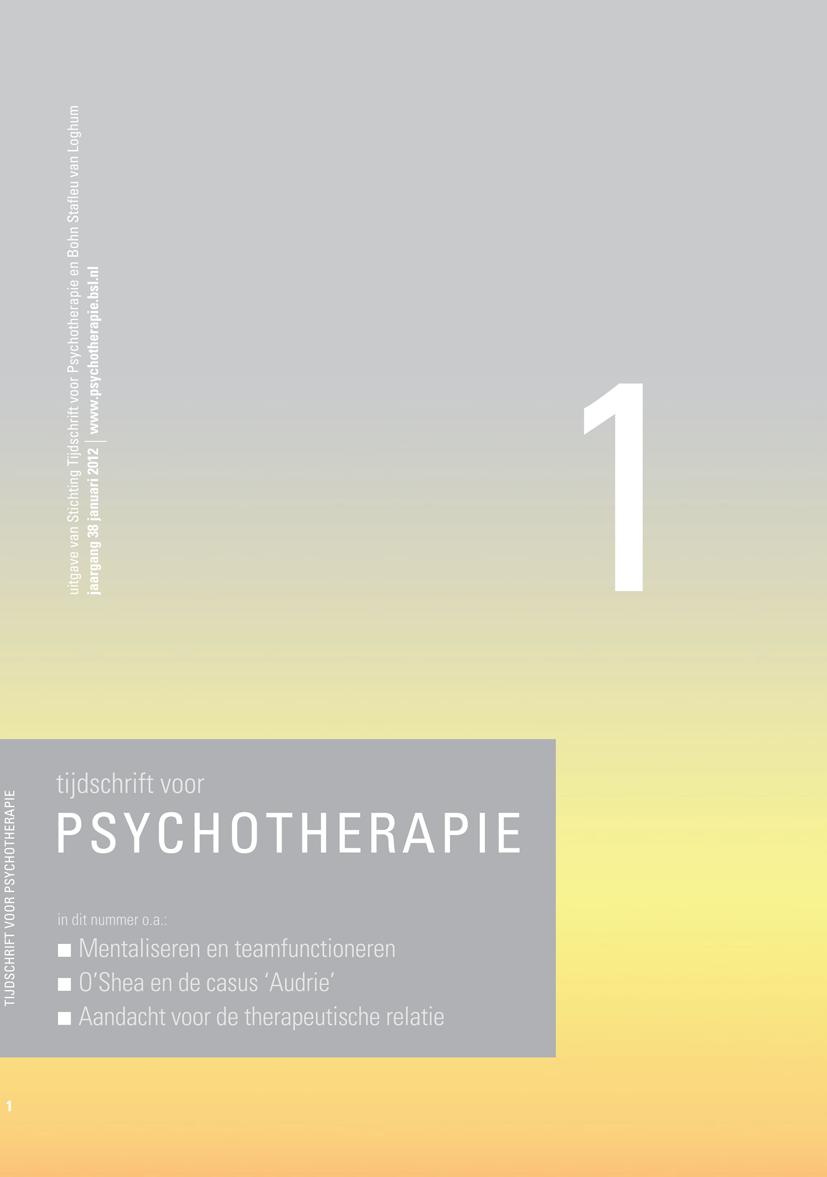| • |
Many patients with severe personality disorder are treated within a (day-)clinical setting. There are dangers associated with
these treatments. Problems in the team group are one source of these dangers. In a clinical treatment setting, continual attention
and care for the quality of team functioning are required. Team members and team processes have to be managed and supported
in a way that is compatible with the treatment model of the setting. Certain organizational and intervention principles of
mentalization based treatment may serve as a compass in guiding the way in which team members work together. There are two
issues here:
|
| 1. |
how the principles of a mentalization based approach can be used in the quest for a better cooperation in and integration
of the team group;;
|
| 2. |
how a well-functioning team can support and eventually repair the mentalizing capacity of individual team members.;
|
Unsafe attachment and very early trauma underlie the multiple problems our clients experience in daily life, which lead to dysfunctional thoughts and behaviour patterns. During infancy the development of the (social) brain depends on the presence or absence of love and affection. The interaction between parents and children during the early years is crucial. The introduction of loving and dedicated parents into therapy might be essential for successful treatment.
This article introduces Katie O’Shea’s model and its four stages. The first three stages effectively accomplish stabilisation and are to be considered as preparation tools when targeting early trauma. In stage 4 early trauma can be treated in a structured manner. With O’Shea’s ‘EMDR’- model we create a new blueprint in the brain which results in ‘a reconstruction of the self image‘. With her model O’Shea aims at a recovery of prenatal and perinatal trauma that cannot easily be targeted with the standard EMDR protocol.
| • |
The concept of vulnerability in forensic patients with personality disorders has been pushed into the background by a variety
of social and treatment methodical developments within forensic psychiatry. Currently, the focus is more on criminogenic and
crimerelated factors in behaviour and thinking of offenders. This way of viewing and handling is detrimental to the attention
to the vulnerable development of these patients.
|
| 1. |
resulting from traumatic experiences and, as a consequence, the patient’s unsecure attachment development;
|
| 2. |
as a not readily recognizable undercurrent in treatment relationships with forensic patients;
|
| 3. |
from the position of the forensic institutes itself as a result of negative social and political discussions.
|
In the therapeutic relationship those vulnerabilities will be visible and adjustable. I discuss and underpin the need to apply the therapeutic alliance actively to personality disordered forensic patients.

